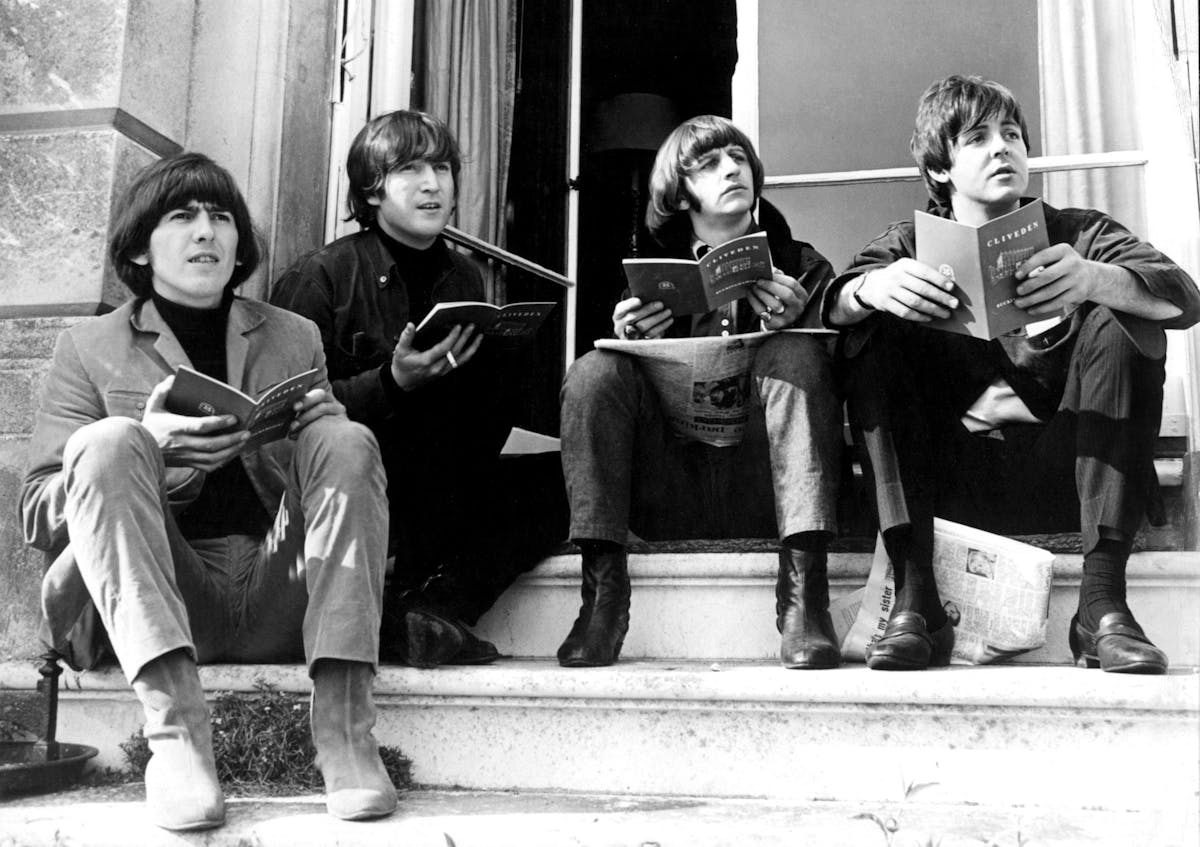How the Fab Four Rocked the Fashion World
In her exhaustive and engagingly written study of the Beatles’s sartorial history — ‘Fashioning the Beatles’— Deirdre Kelly has a great deal to say about how fashion was an important, if not central, concern of the Beatles.

“Fashioning The Beatles: The Looks That Shook The World”
by Deirdre Kelly
Sutherland House Books, 354 Pages.
For those of us who didn’t live through it, it’s hard to imagine the feverish, transformative phenom that was Beatlemania. They created unprecedented groupie hysteria wherever they went. They smashed records with their album sales. Their thirty-minute concert at Shea Stadium netted them $160,000 and an audience of 55,000, the largest ever recorded at the time. With their silly surrealist antics in the jukebox films “A Hard Days Night” and “Help!”, they became the top box office draw in the world. Beatles wigs, pins, t-shirts, and memorabilia flew off the shelves internationally.
Much, of course, has been said about the Beatles’s unique blend of clean boyish fun and sly cultural subversion. Yet in her exhaustive and engagingly written study of the Beatles’s sartorial history — “Fashioning the Beatles”— Deirdre Kelly has a great deal to say about how fashion was an important, if not central, concern of the group. At a time when many North American males were bogged down in boxy suits and crew cuts, the Beatles arrived and conquered North America with clean lines and mop tops, completely transforming the look of a generation.
Ms. Kelly is emphatic that the styling of the Beatles was just as much of an element in their success as any other. The Beatles were fashion hounds from the beginning, and they wielded clothing as a cultural tool with just as much panache as their music.
Ms. Kelly’s first point is their enormous influence in setting trends. When the Beatles arrived in mod suits, bowl cuts, and Beatle boots, the hip world followed. When they opted for turtlenecks and working-class corduroy, the world again followed — and the British fabric industry boomed. When confronted with the utterly unique onset of the psychedelic era, they shifted into full-blown eclectic bohemian finery, mixing costume elements and third-world style — Nehru jackets, anyone? — in a way that was unprecedented.
The Beatles were unique, Ms. Kelly insists, because they were leaders in their styling as much as in their song smithing. The four lads who started out as the shiniest pop product imaginable defied expectations, continuously broke from their previous molds, and innovated in ways that no manager or stylist was able to predict.
Throughout the book, Ms. Kelly insists that their music and influence are, in fact, inextricable. In focusing on their style choices, Ms. Kelly thus provides valuable cultural insight into the complex relationship between pop culture, the pop song, the fashion industry, and the public at large. She suggests the Beatles were a liberating influence, leading ordinary citizens to explore fashion in ways they wouldn’t have otherwise. She quotes film critic Roger Ebert’s reaction to the film “A Hard Day’s Night” as an example: “While I was watching that movie, my hair started to grow.”
Linking musical and cultural trends to the Beatles’s individual looks is exhaustive work, and Ms. Kelly does not disappoint. She proves to be a remarkable sartorial sleuth here, providing us with wardrobe details that would cross the eyes of a less dogged reporter and Beatlemaniac.
Want to know about the cotton blazer John Lennon wore throughout the movie “Help!”? Ms. Kelly knows the story of his particularly fond relationship with that jacket. Want to know who started the trend of corduroy boots to match the Beatles’s new proletarian themed corduroy suits? It was George Harrison’s dogged pursuit of a London cobbler that brought them into the world.
George’s marriage to international fashion model Pattie Boyd is also explored by Ms. Kelly to demonstrate how the fab four might have been privy to privileged fashion trends long before they became mainstream. Worlds collide and intertwine, and culture shifts radically.
Ms. Kelly is especially astute in showing how the Beatles influenced and were influenced by other artists. John Lennon was apparently frantically in search of a beat-up suede coat at one point in the early 1960s, wishing to approximate the one worn by Bob Dylan on his debut album. Dylan, in turn, adopted a Beatles mop top and covered the Paul McCartney ballad “Yesterday.” Mutual artistic and stylistic admiration go hand in hand.
Ultimately, Ms. Kelly’s book is not only an investigation of the Beatles love of fashion, but a detailed portrait of a fascinating cultural decade. The amount of cultural upheaval the Beatles were able to both instigate and live through between 1960 and 1970 is unprecedented in the history of popular culture. Nostalgia and Beatles Buffs will feel enriched and reflective, and younger readers will find much to discover about their grandparent’s generation.

